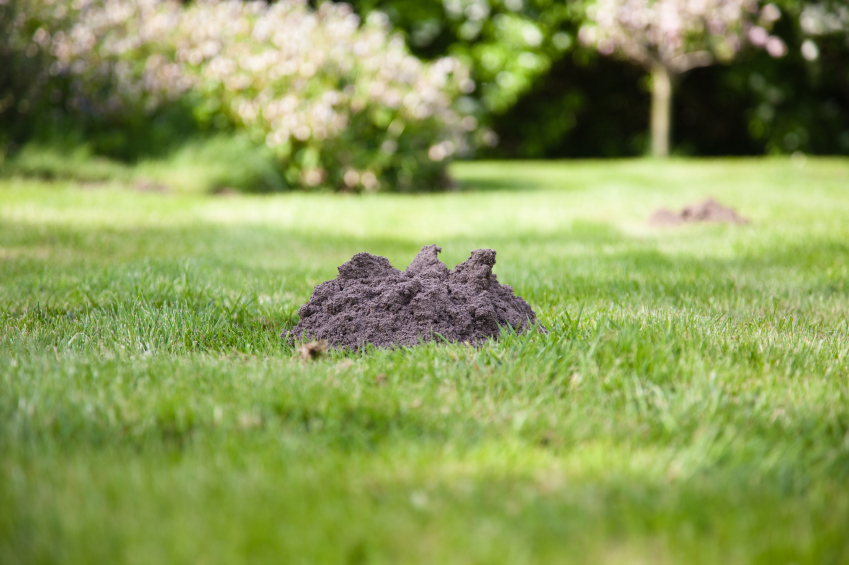
If your early contact with moles was ‘Wind in the Willows’, then meeting them in the flesh – or rather seeing their handiwork on your lawn – will be a sobering experience. Gone is the romance of good-natured Mole, who you suddenly realize has no concern for you at all but instead is intent on raising random ridges and volcanic earth piles across the surface of that lawn you worked so hard to level.
Moles are indeed fascinating creatures, living blind, solitary lives in their tunnels and feeding on earthworms, grubs and nuts. Their damage to lawns is not the result of feeding on the grass, but from the tunnels they build to catch worms.
So one line of defence is to reduce the levels of white-grubs (the larval stages of the chafer beetle), that are found under most lawns. These insects feed on grass roots, so are worth controlling for that reason anyway. However, while some people report success from white-grub control, others find it make little or no difference to their moles. Since much of their diet is earthworms, which are valuable creatures and should not be killed anyway, it is reasonable that white-grub control is unlikely to be effective.
Mole Repellents
A possible way of controlling moles is with mole repellents. These are typically inert granules coated with castor oil (derived from the toxic Castor Bean plant Ricinus). Various kinds of pepper oils may also be added. These are meant to act as irritants and make the moles move away, but reports are very inconsistent and it is unlikely that these repellents will be successful.
An important point is that moles often do not stay for long, so when they disappear following some treatment, this may merely be a coincidence. This fact helps us understand why there is so much conflicting information around on mole control. On the other hand, although solitary, colonies can develop ever time, so your mole problems may increase greatly if steps are not taken when the first damage is seen.
Flooding the lawn is also sometimes suggested, but in fact this tends to drive worms, and therefore moles, closer to the surface where their tunnels will be even more conspicuous.
Sound Generators
Sonic scarers are often recommended. This is a device – often solar-powered – which generates a high-frequency sound (above the level of human hearing) intended to annoy the moles and drive them away. Pulses of sound are emitted every minute or 30 seconds, depending on the brand. They should contain a battery which is re-charged by the solar-panel, so that they continue to work at night and on very cloudy days.
Like mole repellents, sonic devices have mixed reviews. Some people report great success, others complete failure. One important consideration is the type of soil in your garden. In a loose, sandy soil the sound waves will quickly dissipate and be ineffective, but in a compacted clay soil the sound will travel well and is likely to much more effective. So if you have clay soil this could be a method of controlling moles worth exploring, otherwise, let’s move on!
Trapping Moles
Most people today have a low tolerance for killing animals, particularly in more urban areas, but the hard truth is that trapping is the only effective way to remove moles from your property.
It is even more unfortunate that the so-called humane traps cause more suffering and usually result in the death of the mole anyway, than does the usual scissor-trap which causes the mole to die instantly. A quick death is more humane than dying of hunger of being killed by other moles whose territory you place ‘your’ mole in when you think you are gently releasing it back into nature.
To be effective, traps need to be placed in tunnels that are being used. To find out if a tunnel is in use, trample the soil down along the line of the tunnel. If in 24 to 48 hours the soil shows signs of disturbance, then the tunnel is in use. Look for main runways, which tend to be straight, not wiggly and often connect two mounds. This is where the mole spends most of its time.
It is very important to place the traps correctly and to make sure that the mole cannot pass around the trap, but must pass through it. For a detailed discussion on successfully trapping moles, this site will give you everything you need to know.
So if you are not willing to live with your moles, don’t waste your time with other methods, trapping is the only really viable solution. The choice is yours.




